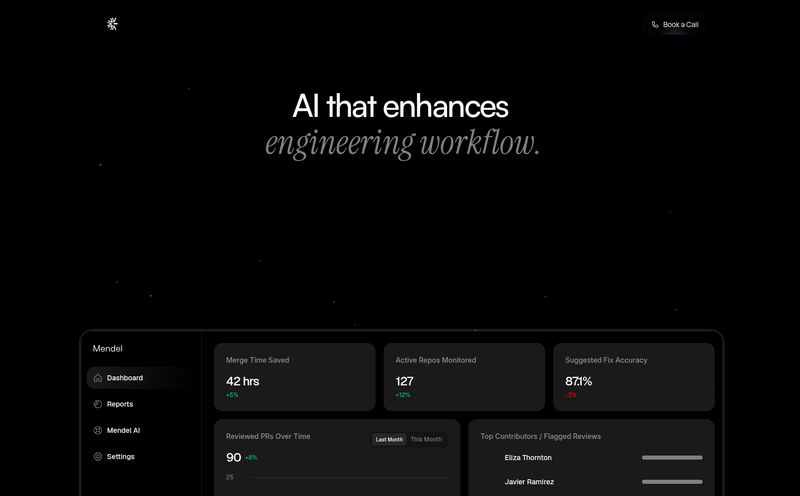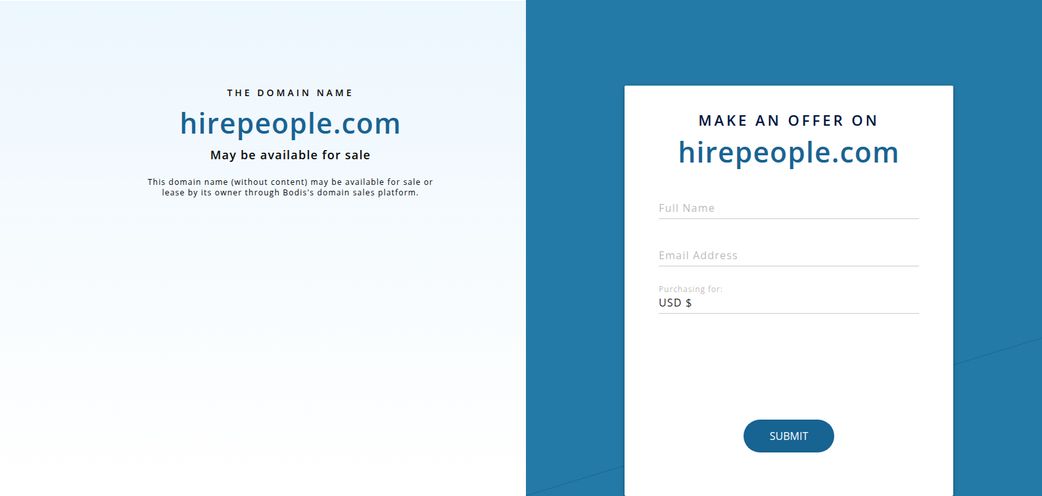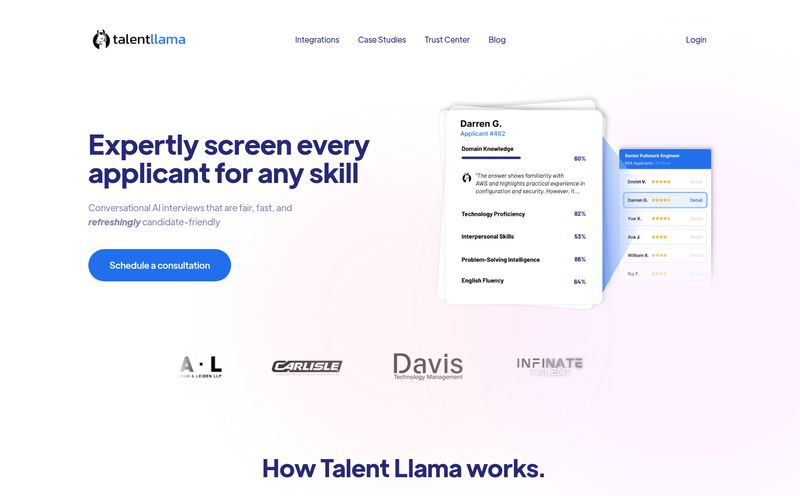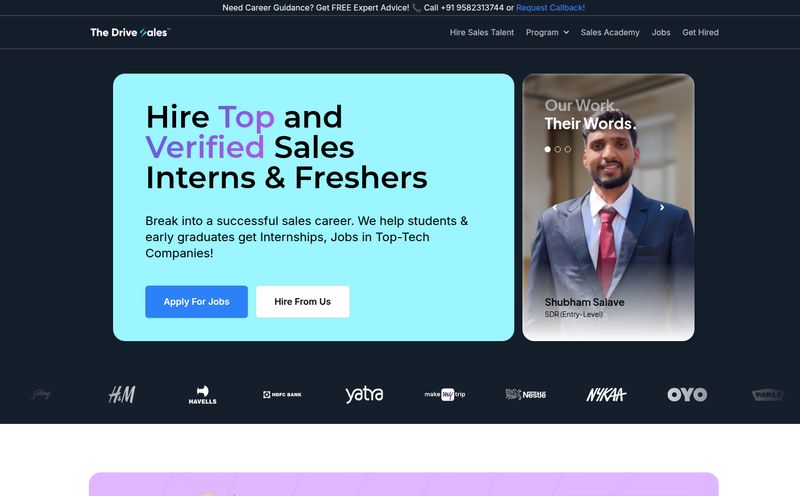Hiring a freelancer can be an absolute slog. You post a job on Upwork or Fiverr, full of hope, and within hours your inbox is a warzone. You get fifty proposals—ten are clearly bot-written, twenty are wildly off-base, nineteen are from people who definitely didn't read your brief, and maybe, just maybe, one is a contender. It’s a numbers game that burns time most of us just don't have.
I've been in the SEO and digital marketing trenches for years, and I've hired more freelancers than I can count. It's a process I've come to dread. So when I heard about a new platform called StackWalls, my ears perked up. The pitch? An AI-powered marketplace that doesn’t just show you a list of freelancers. It supposedly understands your business need, crafts a tailored no-code solution, and then matches you with the perfect person for the job. All from a simple prompt.
Sounds a bit like magic, right? Well, I’m both a skeptic and an optimist, so I had to take a closer look.
What Exactly is StackWalls, Anyway?
Think of StackWalls less as a sprawling freelance directory and more as a smart, AI-powered project manager. You don't just browse profiles; you talk to it. You give it a prompt, like, “I need a simple CRM for my small plumbing business to track leads and schedule jobs.”
Instead of just spitting out a list of developers, the AI is designed to first structure a solution. It might suggest building the CRM using no-code tools like Airtable or Zapier. Then, it digs through its network to find a freelancer who specializes in exactly that and gives you an instant price quote. It’s a completely different approach to the problem. It's not about finding a person; it's about finding a solution, and the person is part of that package.
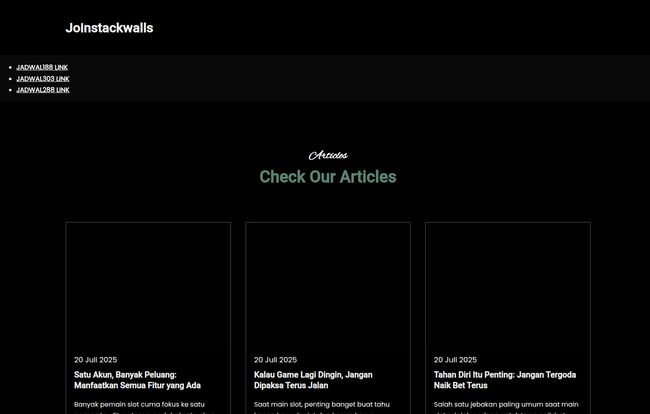
Visit StackWalls
The Magic Behind the Curtain: How It Works
So, how does this AI wizardry actually happen? From what I've gathered, the process is built on a few core pillars that set it apart from teh traditional platforms.
The All-Powerful Prompt
Everything starts with what you tell it. This is probably the most critical step. The old saying “garbage in, garbage out” absolutely applies here. The effectiveness of the entire process hinges on the quality and clarity of your initial request. You need to be specific about your problem and what you want to achieve. It’s not a mind reader, but if you give it good direction, it has the potential to work wonders.
AI-Structured Solutions Meet No-Code
This is the part that I find most intriguing. The focus is squarely on no-code solutions. This is a massive win for small businesses and startups that don't have a Google-sized budget for a custom-coded application. By suggesting tools like Webflow, Bubble, or Glide, StackWalls makes powerful technology accessible. The AI acts as the architect, drawing up the blueprints for your project before a single freelancer is even contacted. This pre-planning could save countless hours of back-and-forth later.
Instant Matches and Transparent Pricing
And here's the kicker: the magic price quote. One of the biggest headaches in freelancing is figuring out the budget. You get quotes ranging from $50 to $5,000 for the same job. StackWalls aims to eliminate that ambiguity by providing an instant, AI-generated quote alongside the freelancer match. This kind of transparency is refreshing, to say the least. No more awkward negotiations or end-of-project sticker shock.
My Honest Take: The Good, The Bad, and The AI
No tool is perfect, and as exciting as StackWalls sounds, it's important to look at it with a critical eye. I’ve been around the block enough times to know that there's always a catch.
Where StackWalls Really Shines
First, the good stuff. The time-saving potential is enormous. Automating the discovery and vetting process is a dream for any busy entrepreneur. The platform's commitment to no-code is another huge plus. It democratizes development, allowing non-technical founders to bring their ideas to life. And honestly, the instant, transparent pricing model could single-handedly disrupt how freelance projects are budgeted. It builds trust from the get-go.
A Few Things to Keep in Mind
Now for the reality check. The biggest hurdle right now? StackWalls is currently on a waitlist. It’s the classic velvet rope outside the hot new club. While it suggests high demand, it also means you can't just jump in and try it today. Patience is a virtue, I guess.
My other reservation is about the AI's nuance. Can an algorithm truly grasp the subtle, creative requirements of a complex project? For straightforward business solutions like building a dashboard or an automated workflow, I think it’s brilliant. For something requiring deep brand understanding or a unique artistic vision... the jury's still out. The system's strength is its structure, which might also be a limitation for more abstract needs.
Finally, it all comes back to your prompt. The platform's success is tied to your ability to articulate your needs clearly. This isn't a flaw in the system, per se, but it's something users need to be aware of.
Who Is This Platform Actually For?
After chewing on it, I have a pretty clear picture of the ideal StackWalls user. This is perfect for:
- Startups & SMBs who need to build an MVP or internal tool fast and on a predictable budget.
- Non-technical founders who have a great idea but don't know the first thing about code.
- Marketing or operations managers who need to quickly stand up a landing page, an integration, or an automation without tying up internal dev resources.
If you're someone who values speed, clarity, and a solution-first approach, this platform is built for you. If you're looking to hire a creative for a highly subjective project, you might still be better off with the traditional, manual approach.
The Million-Dollar (or is it?) Question: StackWalls Pricing
If you're looking for a neat little pricing table, you won't find one. And that actually makes sense. Since every project is unique, the pricing is generated on a per-project basis via that “magic price quote” we talked about. You don’t pay a subscription to use StackWalls; you pay for the freelance project it helps you create. It's free to submit a prompt and get a quote, which is a great, no-risk way to test the waters.
Frequently Asked Questions About StackWalls
How is StackWalls different from Upwork or Fiverr?
The main difference is the AI-driven, solution-first approach. Instead of you sifting through hundreds of profiles, StackWalls' AI interprets your needs, proposes a no-code solution, and then matches you with a pre-vetted freelancer and a price. It's more of a project matchmaker than a simple directory.
Do I need to know how to code to use StackWalls?
Absolutely not. The platform is built around no-code and low-code solutions, making it ideal for non-technical users. You just need to be able to clearly explain the problem you're trying to solve.
Is StackWalls free to use?
It's free to sign up (or join the waitlist) and submit a project prompt to get a solution, match, and quote. You only pay for the actual work delivered by the freelancer you decide to hire.
What kind of projects are best for StackWalls?
It seems best suited for structured business projects. Think things like building an internal tool, creating a customer portal, developing a minimum viable product (MVP), or setting up complex business automations.
Why is there a waitlist to join StackWalls?
A waitlist is common for new, high-demand tech platforms. It allows the company to scale its operations responsibly, ensure a high-quality experience for early users, and fine-tune the AI and freelancer network before opening the floodgates.
My Final Verdict
So, is StackWalls a revolutionary game-changer? It’s too early to call, but it’s one of the most interesting plays I’ve seen in the freelance space in a long time. It addresses a very real, very painful part of the hiring process. The idea of shifting the focus from finding a person to building a solution is smart. Really smart.
While the waitlist is a bit of a tease, and the AI's limitations for creative work are a valid consideration, the promise is undeniable. For the right kind of project, StackWalls could be the shortcut to getting things done that we've all been waiting for. I, for one, am on that waitlist, and I’m genuinely excited to see if the magic is real.
Reference and Sources
- Official Website: StackWalls.co
- For further reading on AI in recruitment: TechCrunch - AI's role in recruiting is expanding
